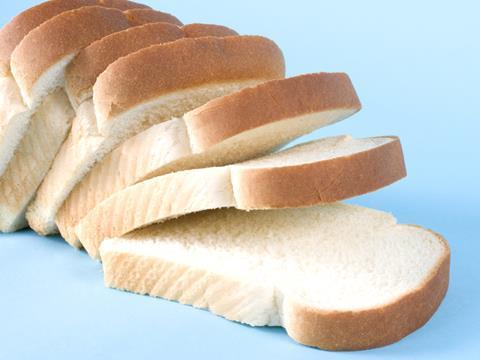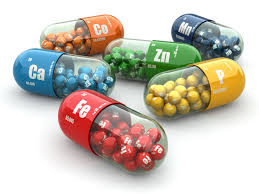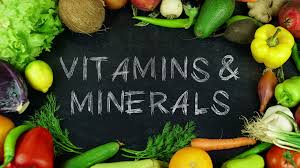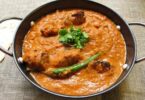It sounds crazy but it’s true. You can actually eat yourself blind with a poor diet.
Two weeks ago Harvey Dyer’s story made global headlines. At 17 years old this young man went blind. So, how did he eat himself into such a horrible health situation when he seemed well nourished?
Food Texture Sensitivity Leads To A Poor Diet
Since Harvey was a child, he ate a processed food nutrient poor diet consisting of the same foods daily. The diet lacked variety and healthy nutrients but he was content. Additionally, he did not feel deprived or hungry. In fact, he enjoyed every bite of what he ate. Harvey’s diet was self-limited because he did not like foods with texture.
Texture plays a big role in what we eat. As a result, food texture such as smooth, crunchy, slimy are not flavorful, but, significantly contribute to taste. For example, cottage cheese as compared to yogurt or even tap water vs. sparkling.

Processed White Bread Contributes To A Poor Diet
Harvey’s limited poor diet consisted of french fries, white bread, potato chips, processed ham and sausage. Despite what he ate, he seemed healthy and well nourished. Harvey went to school and was within his weight goal for his age. There was no reason to believe that he would go blind.
Can You EatYourself Blind With a Poor Diet?
It is very hard to believe that someone so young could literally lose their sight due to eating a poor diet. When I first heard the story I was skeptical. I thought this was another attention grabbing headline that would make me go into belly laughs. However, I dug up some interesting information. Poor eating did indeed cause vitamin and mineral deficiencies that triggered Harvey’s blindness.
Although, the amount of calories he was eating was enough for Harvey to maintain and gain weight as a child. He was not well nourished. Long term vitamin and mineral deficiency caused malnutrition.
Three years before he went blind, Harvey complained of fatigue. Doctors checked his blood and found he was anemic. One year later, his hearing and vision started to suffer. At 17, doctors diagnosed Harvey with nutritional optic neuropathy and low bone density.
Both of these medical conditions are caused by nutritional deficiencies.
Is Blindness A Freak Accident or Common Problem Caused by Poor Diet?
Surely this was a freak accident, or was it? Should you worry this might happen to you or your child? Well, truthfully, as odd as it appears, Harvey is not alone. The same poor diet linked with eye issues and medical health conditions has happened to others. Even though they all appeared well nourished.
- Cian Moore ate only chicken, bread, potatoes and Coke. By the time Cian turned 14, he began complaining of dry itchy eyes. As a result of the eye damage, Cian was unable to play with friends. It ruined his social life. Doctors were unable to figure out the cause of his eye problems. They gave him a poor prognosis for his vision. Eventually, Cian was diagnosed with diet induced vitamin A deficiency. After consuming vitamin shakes and taking high doses of vitamin A supplements, Cian’s vision improved. Yet, the damage was done. He was unable to make a complete recovery.
- A 52-year-old male, similarly, only ate soda, potatoes and bread. Consequently, he complained of tunnel vision and night blindness . Two years prior he was diagnosed with dry eye and both optic and peripheral nerve (nerves that connect the brain and spinal cord to the muscles, skin, and internal organs) dysfunction. Again, vitamin deficiency was noted as the underlying cause. The 52 year old made a complete recovery in one month. Supplementation with vitamin B12, folate and mega doses (50,000 to 100,000 IU) of vitamin A worked!

Supplements Help Prevent Nutritional Deficiencies
Interestingly, soda, bread and fries seem to be a consistent eating pattern theme for each of these individuals.
A Poor Diet Causes Malnutrition in the Modern World
While these cases are extreme, it is not far-fetched to realize that people who are picky eaters are at risk for nutritional deficiencies. Consequently, they are at higher risk for poor health. Malnutrition, as exemplified in these cases, can be present for years. Then, without much warning your life changes forever.
Unfortunately, health experts in wealthy countries with modern technologies are not familiar with the symptoms of malnutrition. Early warning signs of nutritional deficiencies easily go undiagnosed. Long term, lack of nutrients can impart serious quality of life consequences. Don’t let this happen to you.
Diet debates will go on forever. However, being well nourished goes beyond calories, fat protein and carbs. Optimal nutrition starts with fueling your body. Ideally, you must give it the broad range of nutrients it needs.
From these cases, we learn that appearance is not a good indicator of internal health. Being a normal weight does not mean you are well nourished. Being obese does not mean you are over nourished. If you eat a poor diet, it effects your well being.

Vegetables are good sources of vitamins and minerals
How To Go From Eating A Poor Diet To Optimal Health
The 2015-2020 Dietary Guidelines for Americans suggests 8 nutrients that we are at risk for low intake, see the table below.
One example is magnesium. Globally, most adults and the elderly seem to be magnesium deficient.
Another example, suggests that approximately, one third of obese and non-obese children, do not ingest adequate magnesium, vitamin E, calcium, or vitamin D.
WE ARE ALL AT RISK FOR LOW INTAKE OF THESE NUTRIENTS*
Nutrients |
Symptoms of Nutrient Deficiency |
Food Sources |
Daily Nutrient Recommendations |
| Potassium | Muscle weakness, tiredness, tingling or numbness. stomach cramping, bloating, and constipation; irregular heart beat | Artichoke, tomato, beet greens, avocado, sweet potato, Swiss chard, spinach, edamame | 2,600 mg for women; 3,400 mg for men |
| Magnesium | High blood pressure, muscle twitches and cramps, anxiety and depression, pre-eclampsia, arrhythmia, asthma, and migraine headaches | Avocado, nuts (Brazil, cashew, almonds), Swiss chard, spinach, oatmeal, mackeral, medium grain (not processed) brown rice | 350 mg magnesium |
| Calcium | Dental issues, depression, painful periods, skin conditions: eczema, psoriasis, Bone fractures, abnormal heart rhythms, numbness and tingling in the hands, arms, feet, legs, and around the mouth | Chia & sunflower seeds, almonds, broccoli, bok choy, Greek yogurt, and cheese | See this chart for recommendations based on age or stage of life |
| Choline | Muscle weakness, organ damage and abnormal deposition of fat in the liver (nonalcoholic fatty liver disease) | Beef liver, wheat germ, egg, beef, fish: scallops, cod, shrimp, salmon, chicken, broccoli, Brussel sprouts | 425 mg for women and 550 mg for men and more. |
| Vitamins A | dry eyes or night blindness, dry skin or acne, respiratory infections, infertility | Beef liver, cod liver oil, egg, Orange foods: sweet potato, pumpkin, mango, carrot, cantaloupe; and green foods: collards, kale, spinach | 700 μg RAE (retinol activity equivalents) for women and 900 μg RAE for men |
| Vitamin C |
Fatigue, irritability, frequent sickness, bleeding gums, iron deficiency, easy bruising, painful joints, rough bumpy skin, spoon shaped fingernails, and corkscrew shaped body hair
|
Kiwi, strawberries, citrus fruit, Brussel sprouts, Broccoli | 2 grams for adults and check chart for more info. |
| Vitamin D | Erectile dysfunction, fatigue, sleep disorders, low immune system bone fractures | Sardines, mackeral, pink salmon, and sunlight | 600 IU |
| Vitamin E | Muscle weakness | Wheat germ oil, sunflower seeds, almonds, salmon, trout | α-tocopherol: 15 mg |
| Iron (menstruating girls and women ages 19-50) |
Low energy, fatigue, weakness, pale skin, cold hands and feet, dizziness, headache. Cravings for ice or dirt.
|
spinach (Vit. C increases absorption), tofu, mussels, oysters, liver, beef, beans, lentils | 8 mg for men and postmenopausal women, 18 mg for pre-menopausal women, and 27 mg for pregnant women and specific guidelines for kids |
* The goal of nutrient recommendations is to ensure adequate nutrient intake, not too much or too little. This chart is a guide. Therefore, Do Not Use This Chart Instead Of Seeking Medical Advice From Your Doctor. ALWAYS speak to a doctor who can prescribe the correct dose for you.
Are You Nutritionally Deficient or Well Nourished?
Are you eating a poor diet, void of variety of foods? Vitamin deficiencies are unlikely to be recognized quickly. If you are not sure you are eating healthy, for example, consider testing for nutritional deficiencies.
Eating different types of foods will keep you well nourished. It is the healthiest way to eat. Moreover, natural meat and plant based foods provide important nutrients to thrive (vitamins, minerals, antioxidants, phytonutrients and fiber).
However, if you just can’t stand eating a variety of foods; use supplements. In doing this, you ensure your diet consists of vitamins and minerals that will protect against the health consequence of a poor diet.
Poor Diet Wrap-Up
In conclusion, yes, a poor diet has blinded a few otherwise “healthy” people. Therefore, if you are not eating a variety of foods, you might be malnourished and not even know it. Modern malnutrition can be defined by inadequate vitamin and mineral levels. Do not eat yourself blind.
Why should anyone who has access to food have to suffer from the health consequences of malnutrition? Live a healthy productive life. Most importantly, fuel your body with healthy foods. Or, use supplements to boost vitamin and mineral levels. Be aware of the symptoms of a vitamin deficiency. After that, if you are not sure, test vitamin levels and make nutritional changes accordingly.






